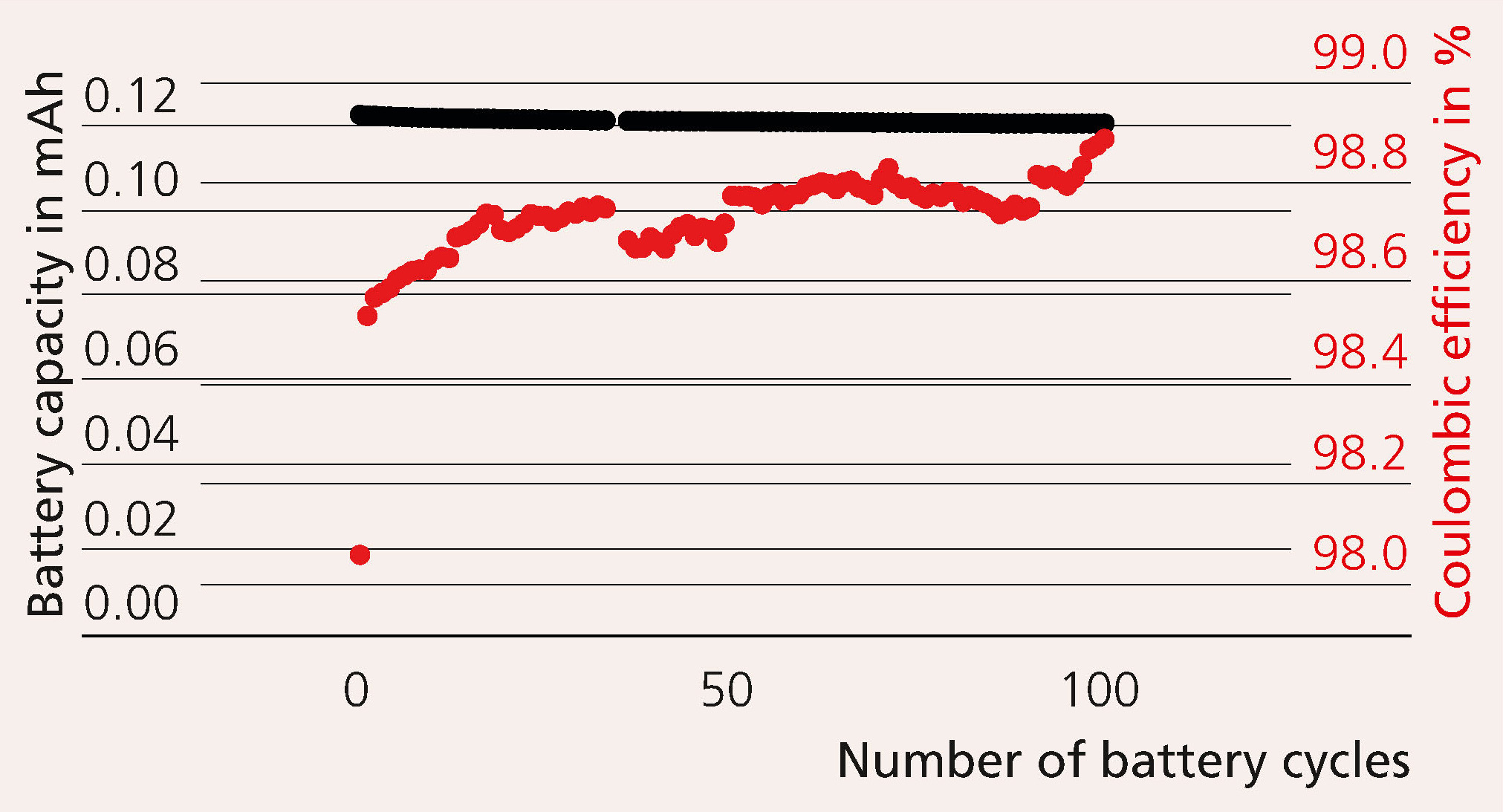
Solid electrolyte substrates for sodium batteries
Current research




Sodium(Na)-based battery concepts are seen as cost-effective alternatives to lithium batteries thanks to their abundantly available and environmentally friendly raw material. Among them, the sodium solid-state battery is one promising technology. In comparison to conventional batteries, the electrodes are separated by a solid, ceramic ion-conductor and not by a liquid electrolyte-soaked separator. Because of its dense microstructures and redox stability, metallic sodium can be used safely as an anode. This enables higher theoretical energy densities than in commercial Li- or Na-ion accumulators. Known from stationary energy storage solutions at 300 °C in sodium-sulfur and ZEBRA batteries, the oxide ceramics beta-alumina and NASICON are considered prominent candidates for suitable Na-solid electrolytes. Fraunhofer IKTS has now developed novel glass-ceramic solid electrolytes, known as sodium rare earth silicates (NaRSiO), which can be processed via the powder route. At 1050 to 1120 °C, they have a lower sintering temperature than beta-alumina (> 1600 °C) and NASICON (> 1230 °C). The research focus is on the realization of thin sintered NaRSiO substrates for use in sodium batteries.
At Fraunhofer IKTS, the availability of glass melts and various mills makes it possible to produce the powder on a kilogram scale. NaRSiO materials with the conductive phase Na5RSi4O12 (R= Yb, Y, Gd, Sm) have been synthesized, whereby the various rare earth elements have different effects on ionic conductivities (Table).
The NaRSiO samples thus exhibit comparably high conductivities to the already established beta-alumina and NASICON. Cyclization of a full cell with a sintered NaGdSiO tape as separator shows high-capacity retention over 100 cycles.
The fabrication of thin substrates was achieved with tape-casting technology, which made it possible to produce a tape with a thickness of approx. 200 µm and a length of several meters. The tape was separated into smaller sheets in order to press two tape sheets together to bolster mechanical stability. For the measurements, discs with 20 mm diameter were punched out and sintered. Despite the difficulties in sintering thin ceramic substrates, which can result in warping or cracking, it was possible to successfully produce flat and dense substrates with good surface quality and ionic conductivity (Table).
Fraunhofer IKTS develops novel Na-battery concepts and supports companies in materials development and in the production of thin ion-conducting substrates using tape-casting or thick-film technology.
Supported by

